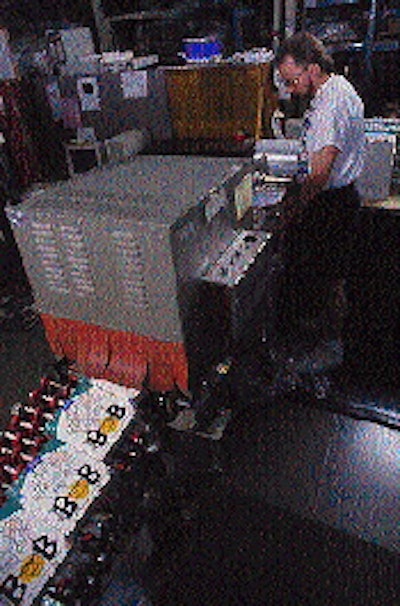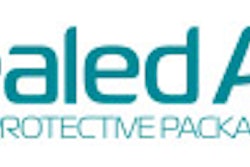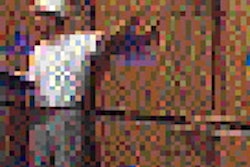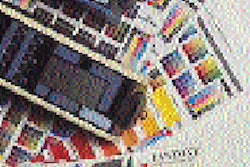You might think that Microsoft Corp., Redmond, WA, was so successful that each product would have its own smooth-running packaging line. That would seem an efficient, although expensive, method for the industry leader. But keep in mind that Forbes magazine calls Microsoft company president Bill Gates the richest man in America. That net worth didn't accrue by overspending on packaging. The reality is that packaging is a bit of a mixed bag for Microsoft. Sure, it operates a huge 250ꯠ-sq-ft packaging plant in Bothell, WA. That plant produces only about half the volume needed to keep North American dealers and customers supplied. A sizable network of copackers are also packaging and shipping Microsoft wares. At Bothell, though, Microsoft's packaging operations did undergo a transformation-from a few assembly and packaging lines with as much automation as possible to many individual work cells where small teams of people do all assembly and packaging. Although this change isn't brand new, it's the first time Microsoft has detailed the specifics. "We had developed high-speed packaging lines in our plant," recalls B.J. Williams, then manager of North American manufacturing. "But when we looked at our rate of rejects, our change-over time, all elements in our productivity, we knew we were going down the wrong path. That's when we threw out the automated equipment and changed to L-bar sealers." Remember Bill Gates? Well, "threw out" really means the former equipment was sold. About four years ago, Microsoft decided its packaging needed a "human" touch, especially to enforce the stringent quality-control standards that management demanded. Automated lines were great for production output and packaging speeds, but not so great at inspecting each package before the fact, not after. "We now use the 'roundtable concept' of production rather than assembly lines," says Williams. "Instead of having ten to fifteen people in a linear product line, we put from two to four people in a 'production cell' that's responsible for full product assembly and packaging. With this concept, production comes to the employee, rather than the employee coming to the production line." The result has been a 23% increase in productivity in packaging, according to the company. This change also meant a sizeable investment in semi-automatic L-bar film sealers and shrink tunnels. Although the amount is unconfirmed, the supplier, Seal-A-Tron (Mil- waukie, OR), claims that Microsoft bought in excess of $1 million worth of equipment in just two years. It's believable when you realize that Microsoft's Bothell plant now operates 34 production cells for North American production and will soon add another nine. The plant also continues to operate two small production lines. "North American production is just part of our packaging here," says Bill Spooner, head of packaging maintenance. "The international division also operates an-other 15 or more cells. And they op-erate virtually the same as the domestic ones." At the same time, Micro-soft has committed to D955 shrink film from Cryovac (Dun-can, SC) since the change. It uses a 75-ga film for conventional small packages, a 1-mil film for the larger packages. Size a big issue "Probably our primary concern was size. We needed equipment as small as possible to fit within our production cells because space is limited," Williams says. "The ability to house a wrapper and shrink tunnel in a small space was crucial. Plus we wanted a system that wouldn't create a lot of heat for the operators, which would make it unpleasant to work with." Explains Werner Duemmer of Seal-A-Tron: "They also have a lot of small runs, so set-up time was a killer. The small runs accommodate just-in-time shipping requirements." Microsoft relied on its packaging distributor who recommended the Seal-A-Trons. Spooner visited other installations using the equipment, and talked with managers and operators. "The price was right and the size was right, too," says Spooner. Another factor was that the supplier was located "just down the road," headquartered in Bellevue, WA. That's no longer true, but support was important because so many of the competitors were many hours away, particularly those located on the East Coast. Microsoft chose L-sealers called Model Ocono Brute X with a 16x20" seal area from Seal-A-Tron. The Tru-temp(TM) impulse wire control is one feature of this wrapper that Microsoft operators like. After nearly four years of operation, Spooner is satisfied that "we found the best semi-automatic system from a reliability standpoint and from its compact size. We work them hard." Special tunnels A lot of Microsoft's software remains in a small, low-profile package. These are packaged on the most basic equipment with a Brute X tunnel that measures 17x10x28". More recently, the company began to offer "bundled" software that are packages of several programs in one. With all attendant manuals, these packages can get quite large. For lines that package these, the company selected the compact T-series shrink tunnels with a special feature that Seal-A-Tron calls Varilocety(TM). These tunnels are equipped with a variable speed blower motor that can be adjusted from 1길 to 3길 rpm for exceptional air circulation within the tunnel. This helps Microsoft gain cosmetically attractive packages even with a compact unit. In essence, it reduces the chance of "dog ears" in the finished film. "This company wants the perfect package," Duemmer says. "They're selling maybe five hundred dollars worth of 'brainpower,' and they want it to look perfect, not sloppy." Since the project was implemented, Microsoft has continued to use the D955 film from Cryovac. It's tested others-and it still does-but it hasn't yet found an acceptable alternative to the film. "Other film manufacturers have worked hard to get our business, but we've been extremely satisfied with the Cryovac film," says Williams. "It's given us the high quality package that we need." In a packaging cell, the main moving part is a rotating table with two levels. Each worker has a specific job in a sequence, says Williams. Usually the first worker makes a subassembly from boxes of printed materials and places it on the table. "As the table rotates, another worker adds disks and puts it all inside the retail box," he explains. "The boxes are removed from the table for the operator of the wrapping station. He places the box into the film, seals it with the L-bar and slides it to the infeed of the shrink tunnel." Avoiding labels More than any other software company, Microsoft has been the target of counterfeiters, especially in the Far East. For those markets-and in some cases in the U.S.-the company has moved into holographic labels to try to make counterfeiting very difficult. But even holographic labels can be duplicated, as the company learned in China (see PW, February '95, p. 16). Williams reports the company was surprised by how fast the counterfeiters were able to duplicate that label. For North American sales, though, labels of any kind are avoided, he says, because of their effect on productivity. "We try to avoid labeling because it's so extremely labor-intensive," Williams says. "When you look at multiple labels in different locations, all hand-applied, it can become a nightmare. Plus you have the problem of cost and disposal of boxes with improperly-applied labels. It's really cumbersome. So we've made it a company philosophy to avoid labels, if at all possible." Some products, like its MS-DOS operating system, use holographic labels and other devices to make counterfeiting time-consuming and expensive. In some cases, holographic proof-of-purchase sheets are packed in other products so that registration of the software will be limited to genuine products. When PW photographed the Bothell plant, Microsoft was packaging its new "Bob" software. It's a mouse-operated system that is designed to help a beginner get ready to use the popular Windows(TM) operating system. Regardless of which product is being packaged, Microsoft wants to deliver the best looking package to the marketplace. Its packaging cells, its film and its shrink packaging equipment continue to provide packaging fit for the leader.
























